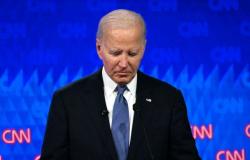An 11.7% increase in the price of gas has just come into effect on July 1, 2024. An increase that will allow the operator GRDF to finance the structural expenses linked to the maintenance and development of its network, but which risks once again weighing on household budgets.
The Energy Regulatory Commission (CRE) announced it on June 10, and here it is, coming into effect on July 1: an 11.7% increase in the price of gas, rather unwelcome in these troubled times, when the erosion of the purchasing power of the French is one of the major concerns of the moment.
For nearly 11 million customers who use gas for heating, cooking or producing sanitary water, this increase would bring the annual bill for an average consumer to 1,184 euros.
To cope with this increase which risks being “painful“for many households renting from social landlords, the consumer association UFC-What to choose intends to renew its group purchasing campaign to make prices more acceptable. A campaign “open to all“, which could be launched after the summer, to guarantee users a stable price for two years.
“For 2022-2024, we were unable to reach any agreement with suppliers because gas prices were so volatile.“, laments Odette Mairey, president of the Côte-d’Or branch of the association.”Today, with the markets regaining stability, we can finally see possibilities, despite a complicated situation linked to all sorts of instabilities.”
This increase, which is not linked to a sudden increase in the price of gas on the markets, should allow GRDF, the national manager of the distribution network, to modernize its installations and finance new connections. The development of biomethane production is also part of the investments that the operator must integrate. Expenditure that would be around 1 billion euros per year until 2027 for GRDF, one of Engie’s subsidiaries of which the State remains the largest shareholder.
This increase is also there to compensate for the overall decline in household gas consumption. A trend that can be observed between 2021 and 2023, with 20% less consumption. This decline could be explained by the rise in temperatures linked to climate change and the need for many consumers to reduce their bills by restricting their usage, when they do not simply decide to abandon this energy.
Fewer customers, for operating costs that will inevitably require regular investments, this is the squaring of the circle for GRDF and gas consumers, who will have to get used to seeing their bills soar.






